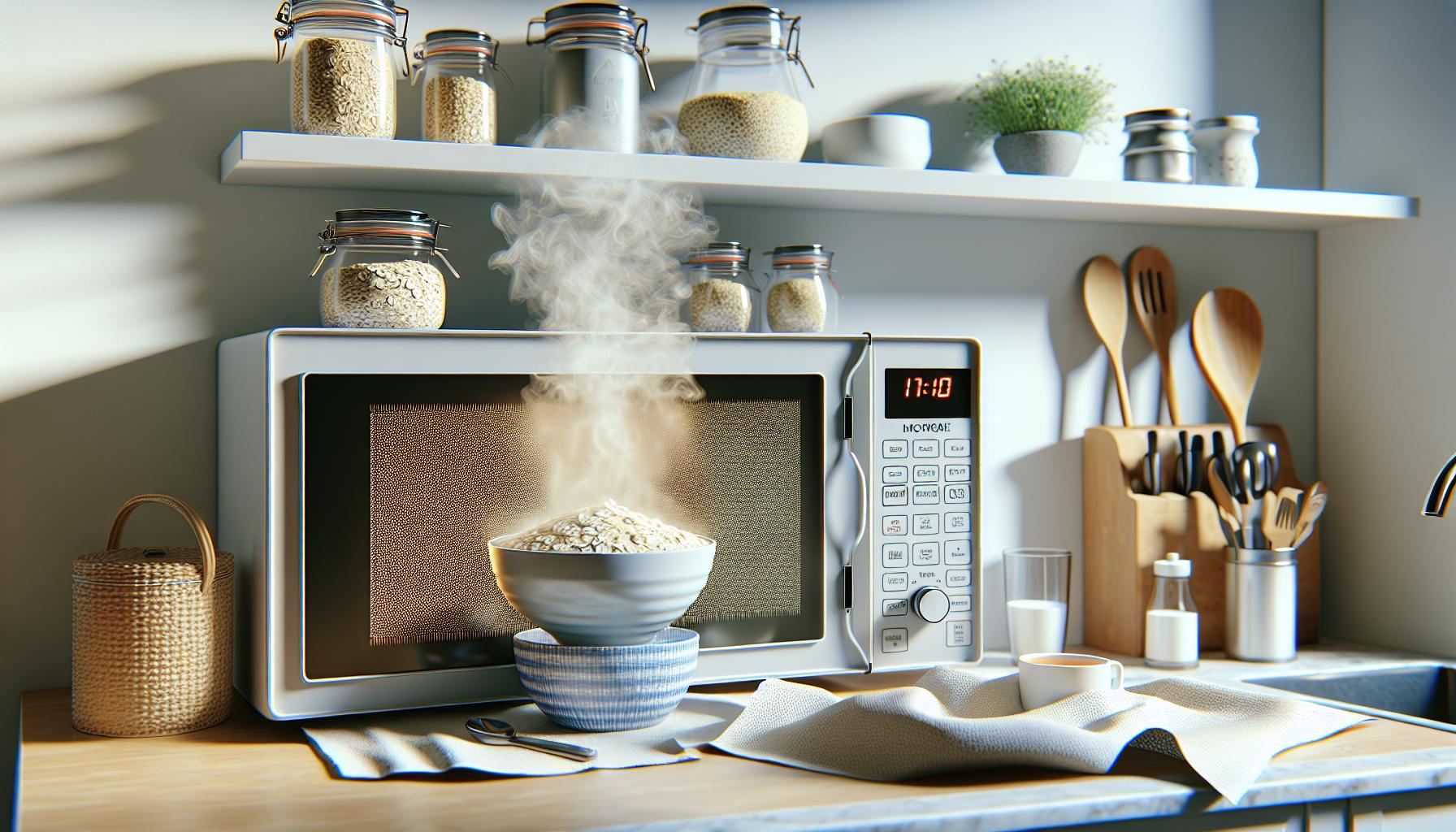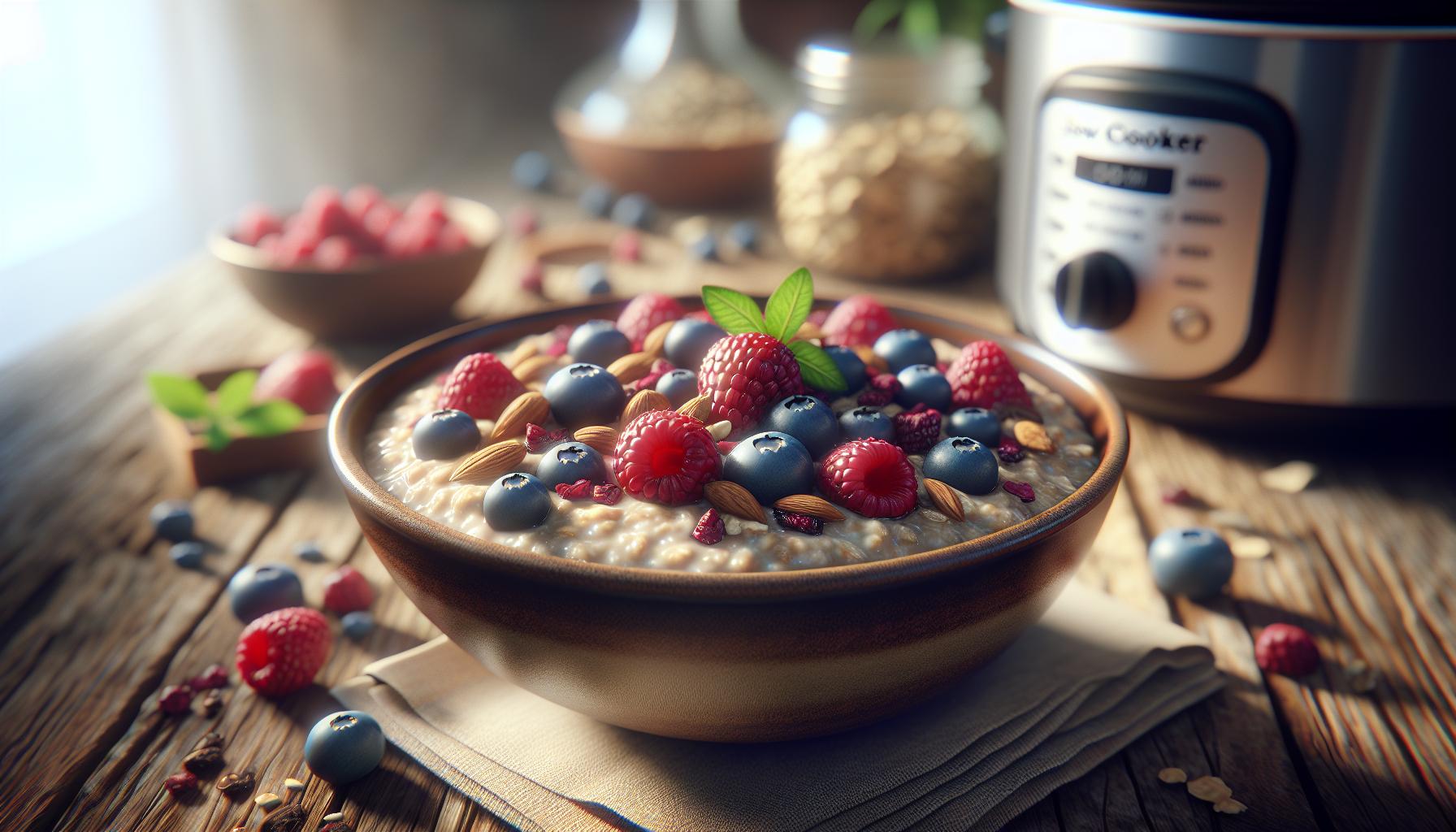Want to transform those plain old oats into a culinary masterpiece? While oats might seem basic they’re actually one of the most versatile ingredients in your pantry. From creamy stovetop porridge to crunchy baked granola these humble grains can become the star of any meal.
Mastering the art of cooking oats isn’t rocket science but it does require understanding a few general cooking techniques for oats. Whether you’re team quick oats or steel-cut aficionado knowing the right cooking methods can make the difference between a bland breakfast and a bowl of pure comfort. Plus with oats being packed with fiber and nutrients they’re not just delicious – they’re a smart choice for health-conscious food lovers.
General Cooking Techniques for Oats
Oats come in several distinct varieties, each offering unique textures and cooking properties. The processing method determines their cooking time, texture profile and optimal uses in recipes.
Quick vs Steel-Cut vs Rolled Oats
Quick oats undergo extensive processing, creating thin flakes that cook in 1-2 minutes. They’re ideal for instant preparations like microwave oatmeal or as ingredients in baked goods such as cookies or muffins.
Steel-cut oats consist of whole oat groats cut into 2-3 pieces by steel blades. They maintain a chewy texture and nutty flavor, making them perfect for hearty breakfast bowls or savory dinner preparations.
Rolled oats (old-fashioned oats) are steamed and flattened whole groats. These versatile oats cook in 5-7 minutes and work well in overnight oats, granola or as a binding agent in meatloaf recipes.
How Processing Affects Cooking Time
Processing directly impacts oat cooking duration and liquid absorption rates. Steel-cut oats require 20-30 minutes to cook completely due to their minimal processing. Rolled oats absorb liquid faster, cooking in 5-7 minutes on stovetop.
| Oat Type | Cooking Time | Water Ratio |
|---|---|---|
| Quick | 1-2 minutes | 1:2 |
| Rolled | 5-7 minutes | 1:2 |
| Steel-Cut | 20-30 minutes | 1:3 |
The degree of processing correlates with texture retention. Steel-cut oats maintain their shape throughout cooking, while quick oats break down rapidly into a creamy consistency.
Stovetop Cooking Methods

Stovetop cooking unleashes the full potential of oats through heat control and continuous monitoring. This traditional method offers versatility in texture control and flavor development.
Traditional Simmering Technique
The traditional simmering technique creates perfectly cooked oats with a creamy consistency. Combining 1 cup of oats with 2 cups of liquid in a saucepan over medium heat starts the process. Bringing the mixture to a gentle boil initiates the cooking cycle. Reducing the heat to low maintains a steady simmer that prevents sticking or burning. Steel-cut oats require 20-30 minutes of simmering with occasional stirring. Rolled oats become tender in 5-7 minutes when simmered correctly. Quick oats transform into a smooth porridge within 1-2 minutes of gentle simmering.
Toasting Oats Before Cooking
Toasting oats enhances their natural nutty flavor profile through caramelization. Adding dry oats to a preheated skillet over medium heat begins the toasting process. Stirring continuously for 3-5 minutes develops golden-brown color without burning. Steel-cut oats benefit most from toasting due to their dense structure. A light coating of butter or oil during toasting adds richness to the final dish. Toasted oats maintain their enhanced flavor when stored in an airtight container for up to 2 weeks. This extra step creates depth in both hot preparations and overnight oats recipes.
Microwave Cooking Techniques

Microwave cooking offers a quick and efficient method for preparing oats, particularly beneficial for rolled and quick oats varieties. The key to successful microwave cooking lies in understanding timing and managing overflow potential.
Perfect Microwave Timing
Quick oats require 1.5 minutes at high power for optimal texture. Rolled oats cook perfectly in 2.5 minutes at high power with a 1:2 oats-to-liquid ratio. Steel-cut oats need 5-6 minutes at 70% power followed by 2 minutes of rest time. Multiple 30-second intervals produce better results than continuous cooking time. A power setting of 70-80% creates even heat distribution throughout the oats.
| Oat Type | Cooking Time | Power Level | Liquid Ratio |
|---|---|---|---|
| Quick | 1.5 minutes | 100% | 1:1.5 |
| Rolled | 2.5 minutes | 100% | 1:2 |
| Steel-cut | 5-6 minutes | 70% | 1:3 |
Preventing Overflow Issues
Deep microwave-safe bowls with 3x the volume of ingredients prevent spillover. A paper towel placed over the bowl catches potential overflow. Stirring intervals every 30 seconds break surface tension reducing bubble formation. Adding a teaspoon of butter or oil reduces foaming during cooking. Maintaining headspace of 2 inches from the bowl rim allows for expansion. Regular monitoring during cooking prevents messy spills. Reducing power levels to 70% after the first minute minimizes rapid bubbling.
Alternative Cooking Methods

Alternative cooking methods transform traditional oat preparation into unique culinary experiences. These general cooking techniques for oats offer convenient options for batch cooking while developing distinct flavors and textures.
Slow Cooker Overnight Oats
Slow cookers create creamy oatmeal with minimal effort through extended low-temperature cooking. Steel-cut oats combine with liquid in a 1:4 ratio, cooking for 7-8 hours on low heat. Adding 1 tablespoon of butter prevents sticking while enhancing flavor. The extended cooking process breaks down the oats’ tough exterior, resulting in a tender texture without stirring. A programmable slow cooker with a warm setting maintains the perfect temperature until serving time. This method yields 4-6 servings of oatmeal, making it ideal for meal preparation.
Baked Oatmeal Technique
Baked oatmeal produces a cake-like breakfast dish with a golden-brown crust. Old-fashioned rolled oats mix with eggs, milk, butter at a 2:1:2 ratio, baking at 350°F for 35-40 minutes. The addition of fruit creates pockets of natural sweetness throughout the dish. A 9×13-inch baking dish yields 8-10 servings of baked oatmeal. This technique creates a firm texture that slices cleanly, perfect for portioning. Storing baked oatmeal in an airtight container keeps it fresh for 5 days in the refrigerator.
Mastering Oat-to-Liquid Ratios
Proper liquid ratios create the foundation for perfectly cooked oats. Each type of oat requires specific liquid measurements to achieve optimal texture during cooking.
Water vs Milk Options
The choice between water milk affects both nutrition content texture of cooked oats. Water produces lighter oatmeal preserving the natural oat flavor making it ideal for savory preparations. Dairy milk creates creamier oatmeal contributing 8g of protein per cup while adding 150 calories. Plant-based alternatives offer distinct profiles:
| Liquid Type | Calories per Cup | Protein (g) | Fat (g) |
|---|---|---|---|
| Water | 0 | 0 | 0 |
| Whole Milk | 150 | 8 | 8 |
| Almond Milk | 30 | 1 | 3 |
| Oat Milk | 120 | 3 | 5 |
| Oat Type | Liquid Ratio | Cooking Time | Texture Result |
|---|---|---|---|
| Steel-cut | 1:4 | 25-30 min | Chewy firm |
| Rolled | 1:2 | 5-7 min | Creamy medium |
| Quick | 1:1.5 | 1-2 min | Smooth soft |
Tips for Flavor Enhancement
Enhancing oatmeal flavor transforms basic ingredients into gourmet meals. Strategic combinations of ingredients create depth while maintaining the nutritional benefits of oats.
Sweet and Savory Combinations
Sweet oatmeal combinations include maple syrup with cinnamon, honey with vanilla extract or brown sugar with nutmeg. Savory options incorporate cheese, herbs or spices such as garlic powder, thyme or paprika. Adding protein elements elevates oatmeal into complete meals – eggs create a breakfast bowl while shredded chicken produces a hearty lunch option. Mixing nut butters like almond or peanut butter adds richness plus healthy fats. Asian-inspired combinations feature soy sauce, sesame oil or miso paste for umami depth. Mediterranean bowls incorporate olive oil, za’atar seasoning or crumbled feta cheese.
Adding Fruits and Toppings
Fresh fruits add natural sweetness texture to oatmeal dishes. Berries deliver antioxidants while bananas provide potassium creamy texture. Dried fruits concentrate sweetness – raisins, cranberries or chopped dates work well. Crunchy toppings create textural contrast: granola adds clusters while nuts provide healthy fats protein. Seeds like chia, flax or pumpkin increase nutritional value omega fatty acids. Coconut flakes bring tropical notes subtle crunch. Fresh apple pear slices maintain firmness when added just before serving. Roasted nuts amplify flavor through caramelization toasting. Chocolate chips or cacao nibs satisfy sweet cravings with minimal sugar.
Opening a World of Culinary Possibilities
Mastering general cooking techniques for oats opens up a world of culinary possibilities. Whether choosing stovetop slow cooking for rich flavors or quick microwave methods for convenience these versatile grains adapt to any schedule or preference. The key to perfect oats lies in understanding the distinct properties of each variety and matching them with appropriate cooking methods and liquid ratios.
Armed with these general cooking techniques for oats anyone can transform simple oats into delicious and nutritious meals. From creamy breakfast bowls to hearty baked dishes oats prove they’re more than just a basic breakfast staple. They’re a canvas for creativity in the kitchen that delivers both satisfaction and nutrition.

